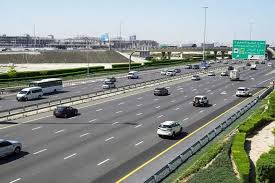Dubai has taken significant strides in enhancing its transportation infrastructure in 2024, with the introduction of new measures aimed at reducing journey times at 50 key locations across the city. These changes, designed to improve traffic flow and minimize congestion, are part of Dubai’s broader vision to become a global hub of innovation and sustainability, ensuring seamless mobility for residents and visitors alike.
With Dubai’s rapid growth and increasing urbanization, the demand for efficient and effective transportation solutions has never been higher. As the city continues to expand, reducing journey times and improving the commuting experience have become crucial priorities for both local authorities and the residents who rely on the city’s vast network of roads, public transport systems, and arterial routes.
The 50 Key Locations: A Focus on High-Traffic Areas
The 50 locations targeted for journey time reductions represent some of Dubai’s busiest and most congested areas. These include major intersections, key highways, and busy routes that connect different districts of the city. The focus is on cutting down delays in both private and public transport networks, with an emphasis on improving the overall flow of traffic and enhancing accessibility.

Strategic interventions, such as the upgrading of traffic management systems, improved road markings, the installation of smart signals, and enhanced public transport connectivity, have been implemented at these locations. These measures are designed to streamline traffic, ensuring that vehicles, buses, taxis, and other forms of transport can navigate the city with greater ease and efficiency.

Smart Solutions and Technology Integration
At the heart of these journey-time improvements are advanced technologies and data-driven solutions. Dubai has long been a leader in adopting smart city concepts, and the recent changes in transportation are no exception. By utilizing cutting-edge traffic management systems, real-time data analytics, and smart sensors, the city has been able to monitor and manage traffic flows more effectively than ever before.

For example, the introduction of AI-powered traffic lights and adaptive signal control systems has allowed for more efficient traffic management at high-traffic intersections. These intelligent systems adjust the signal timing in real-time based on traffic conditions, helping to minimize delays and prevent bottlenecks during peak hours. Similarly, the integration of digital signage and GPS tracking systems has made it easier for commuters to access real-time updates on road conditions, public transport schedules, and alternative routes.
Additionally, Dubai’s efforts in implementing vehicle-to-infrastructure (V2I) technology have paved the way for a more connected city. Through V2I, vehicles can communicate directly with traffic management systems, allowing for quicker responses to incidents, accidents, or sudden changes in traffic conditions. This proactive approach not only cuts down on journey times but also enhances overall road safety.
Boost to Public Transport Systems
Public transportation has also been a key focus area in the push to reduce journey times. Dubai has made significant investments in expanding and modernizing its metro, bus, and tram systems to accommodate the growing population and make public transit a more attractive option for commuters.
To complement the existing metro and tram networks, a range of measures have been introduced to speed up bus journeys, reduce waiting times, and improve the overall efficiency of the system. Upgraded bus routes and the introduction of dedicated bus lanes have helped to minimize delays caused by traffic congestion, ensuring that buses can move more freely throughout the city.
In addition to public transport, Dubai has invested in improving the infrastructure for alternative modes of transport such as bicycles and electric scooters. With the city’s commitment to sustainability and reducing carbon emissions, these efforts aim to provide residents with more flexible and eco-friendly options for getting around.
Infrastructure Upgrades and Road Expansions
Alongside technology-driven solutions, infrastructure upgrades and road expansions have played a major role in reducing journey times. The city has focused on improving key highways, flyovers, and underpasses, particularly in areas where traffic congestion is most pronounced. High-traffic routes like Sheikh Zayed Road, Al Khail Road, and Emirates Road have seen significant upgrades, including additional lanes, improved interchanges, and better integration of local roads with main highways.
One of the notable upgrades has been the expansion of the road network to connect new developments and residential areas to the city’s core. These new roads and intersections help ease pressure on existing routes and provide more direct access to vital areas, allowing for faster travel times and a smoother flow of traffic.
Moreover, the development of parking solutions in high-density areas, such as multi-story parking structures and smart parking systems, has alleviated the time spent searching for parking spots, further contributing to overall journey time reductions. By addressing both the volume of traffic and the management of available parking, Dubai has worked towards creating a more seamless transportation experience for its residents.
Environmental and Economic Benefits
Beyond the immediate benefits of reducing travel times, these changes also bring substantial environmental and economic advantages. Shorter journeys mean reduced fuel consumption and lower carbon emissions, aligning with Dubai’s sustainability goals and commitment to reducing its environmental impact.
The improvements to transportation infrastructure also enhance the city’s economic competitiveness. As a global business hub, Dubai relies on its ability to facilitate efficient movement of people and goods. By reducing traffic congestion and improving transport efficiency, Dubai is positioning itself as an even more attractive destination for business and investment.
Furthermore, less time spent in traffic means more productive hours for workers and a higher quality of life for residents. Commuters will spend less time on the road, leaving them with more time for personal activities, leisure, and family. This, in turn, boosts the overall wellbeing of the population and contributes to the city’s social fabric.
A Vision for the Future
Looking ahead, Dubai’s commitment to further improving its transportation infrastructure remains strong. As the city continues to expand and modernize, authorities are focused on creating a future where traffic congestion is minimized, public transport options are convenient and reliable, and environmental sustainability is prioritized.
Plans for expanding the metro network, improving pedestrian and cycling infrastructure, and introducing more green transport options are already in motion. The city is also exploring the possibility of autonomous vehicles and other innovative transportation technologies that could further transform the way people move around Dubai in the future.
Conclusion
Dubai’s bold steps to slash journey times at 50 key locations in 2024 represent a significant achievement in its ongoing efforts to enhance urban mobility. By integrating advanced technologies, expanding infrastructure, and prioritizing sustainable practices, the city is not only improving transportation efficiency but also paving the way for a smarter, greener, and more connected future. As Dubai continues to evolve, these improvements in transportation will undoubtedly play a pivotal role in maintaining the city’s position as a global leader in innovation, sustainability, and quality of life.
Do follow Uae stories for more Updates
Recovery On Demand: Redefining Wellness with Convenience and Innovation














